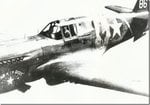oldcrowcv63
Tech Sergeant
Can some one please explain to me the purpose of blast tubes placed over the barrels of wing mounted machine guns? Also, what was the protocol for using blast tubes instead of the fabric gun port covers. I assume fabric gun port covers were used for a combination of aerodynamic efficiency and preventing gun mechanism contamination by environmental debris (AKA dirt).
Last edited:


